Geekom AS6 Internal Hardware Overview
Opening the bottom cover exposes far more than a simple motherboard. Instead, we get a ribbon cable connecting the top and bottom PCBs for this system.
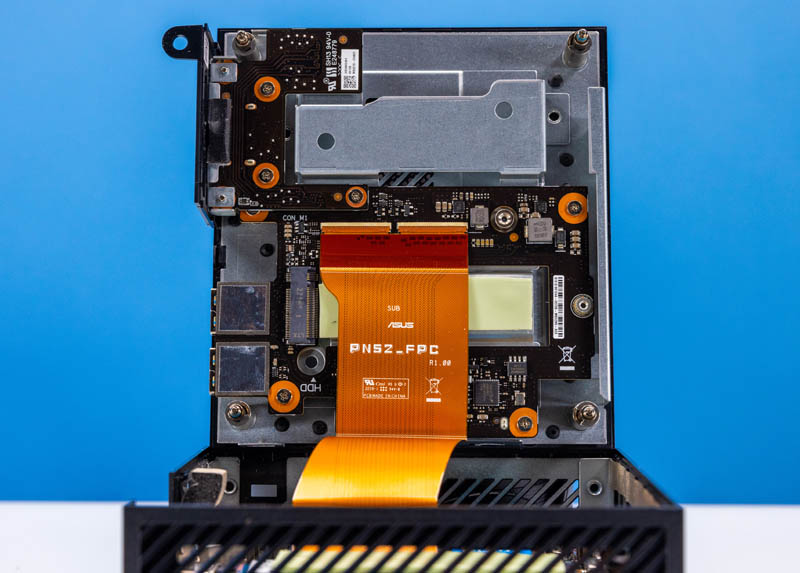
The top in these photos (the bottom cover side) is mostly an I/O expansion board while the bottom (top when the system is on a desk) is the main motherboard.
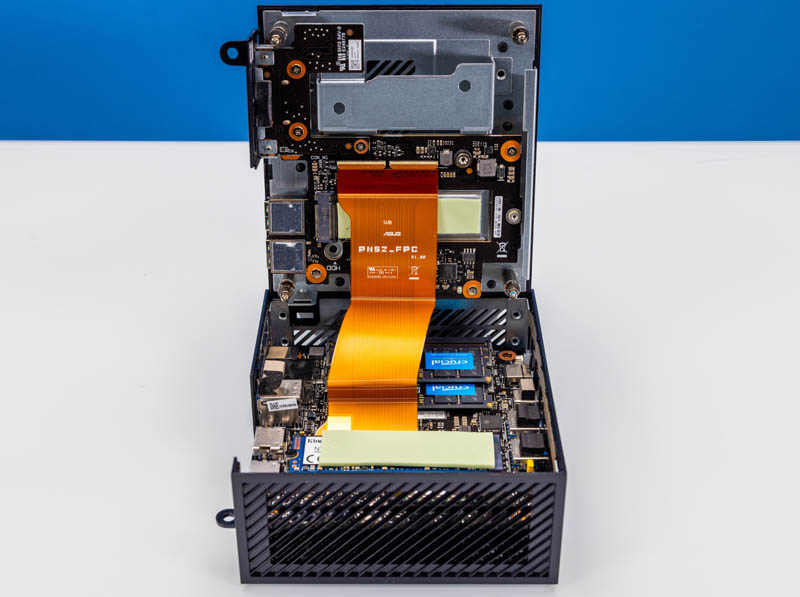
One can see that there is a M.2 slot under the ribbon cable of this expansion board.
The bottom I/O expansion cover has other features like 2.5″ 7mm SSD expansion.
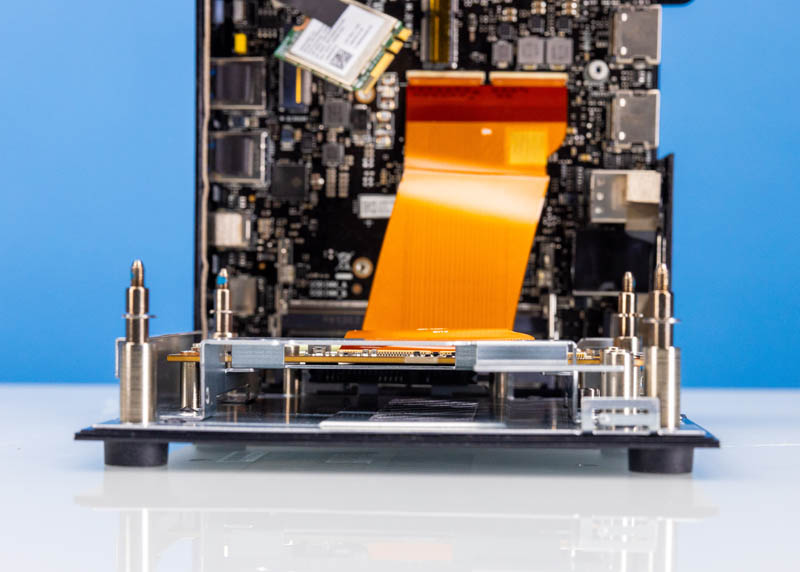
One other interesting feature is the DisplayPort that comes on this system. The two HDMI ports are part of the main motherboard. The DisplayPort is on the I/O module.
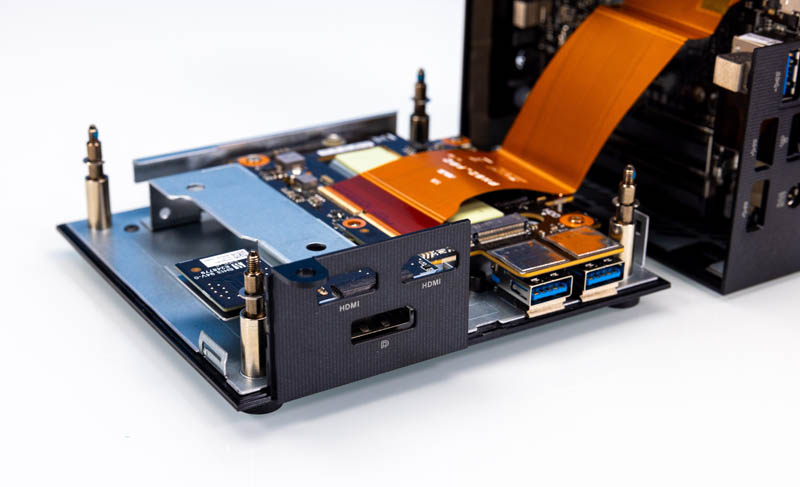
We can pull this out and see the expansion board with the DisplayPort. ASUS has configurable models much like we see in our Project TinyMiniMicro series. Geekom is using the DisplayPort optional module.
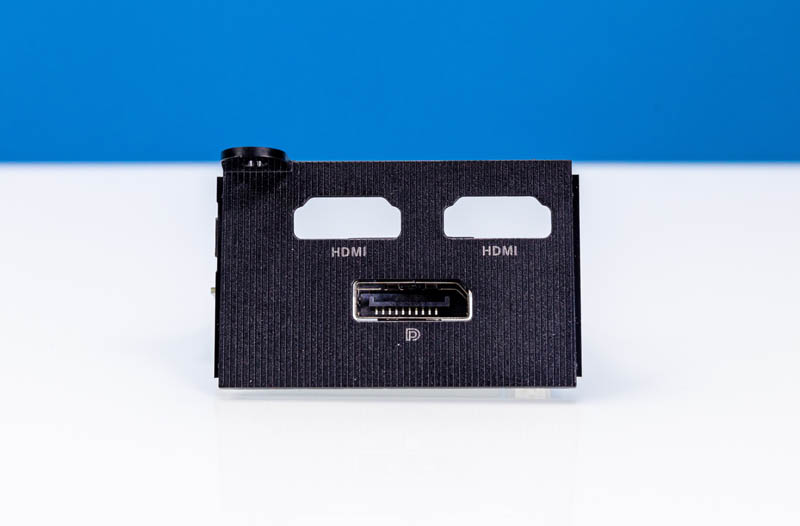
As a funny aside, the woman next to me on the plane while editing this thought the above photo was a robot head with the HDMI ports being the eyes and the DisplayPort being the mouth.
The main motherboard has the CPU but also some of the base functionality.
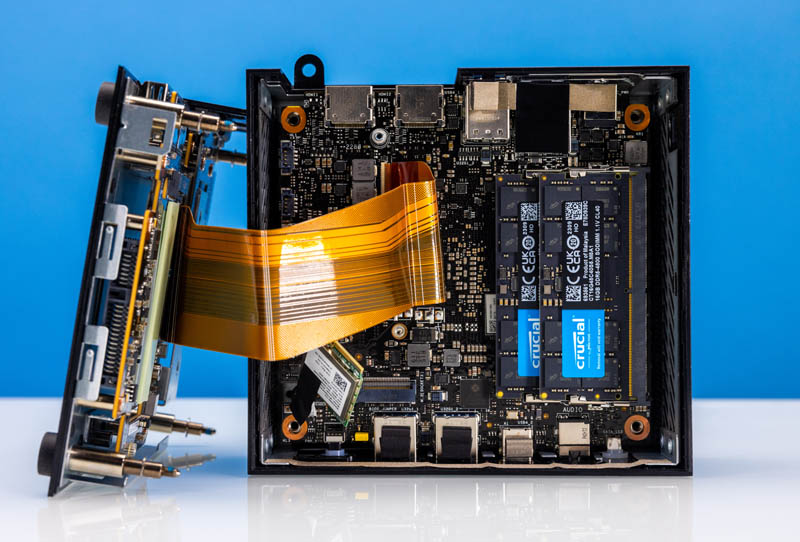
That includes two DDR5 slots. Here we get two Crucial DDR5-4800 16GB SODIMMs. That provides a total of 32GB of memory.
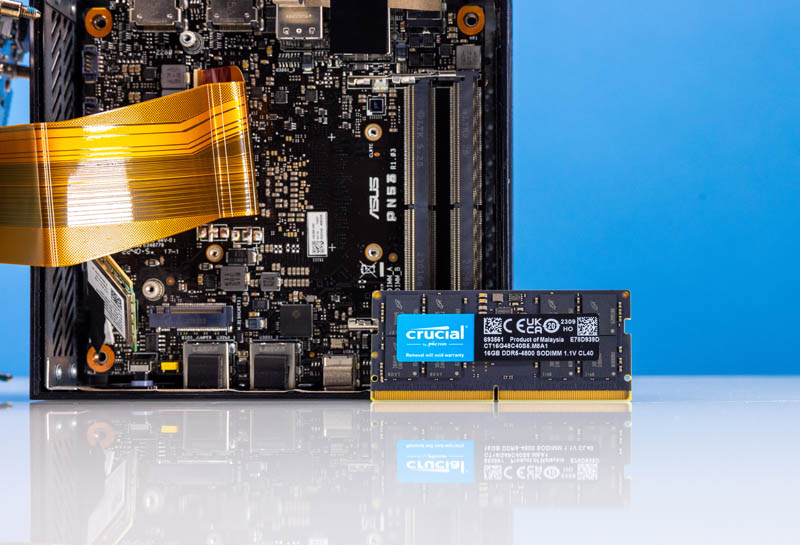
The M.2 SSD installed is the Kingston NV2. This is a 1TB NVMe SSD. It would have been nice to see a 2TB drive given the falling prices of SSDs, but that would have also driven up the overall system costs.
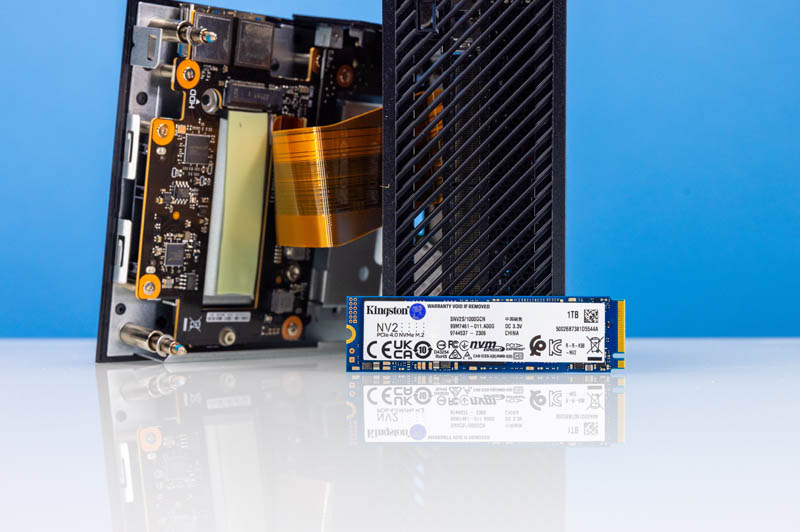
We also get a WiFi 6E and Bluetooth 5.2 card for wireless needs.
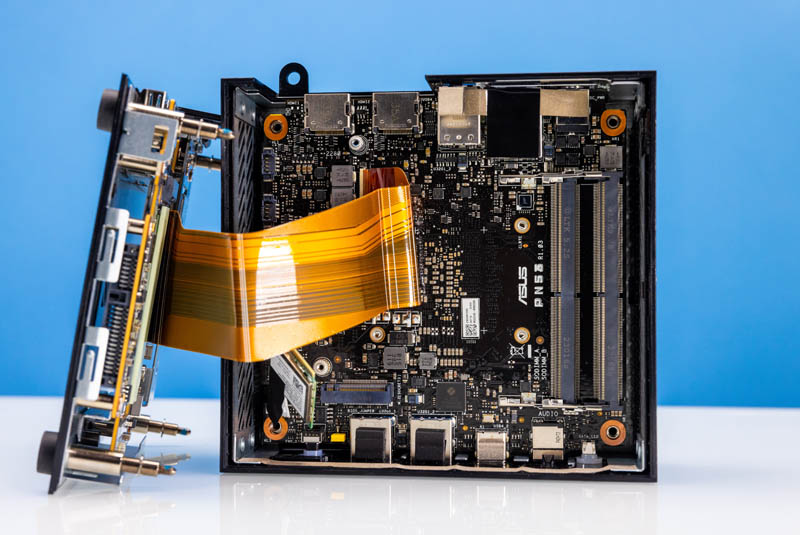
Next, let us get to the performance.

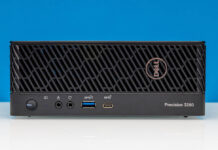
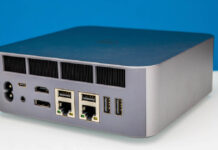
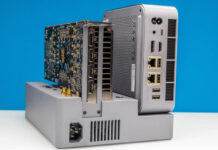
I still don’t get it. You can get a straight ASUS mini for less (or the same, whatever floats your boat, or heck, more), without adding the no name 3rd party that adds….? What? What does buying from them get you that buying from ASUS doesn’t? And how does Geekom, qualify as a known vendor and more than a Topping or Miniswhatever?
Paying the Windows tax? Nope, not for me. I have not done that in ages and will not start doing it again just because some vendor is too lame to offer a “No OS” option.
A name brand like ASUS would be expected to use name brand components and charge appropriately for it…and they do just that in this case.
Using a mini-box like this as a server? A clear description of what STH means by “server” is required before I can comment, but I will like say, “Nope, not for me”.
What I would really be interested in seeing is a mini-box that is like 1 step up from a Raspberry Pi and based on x86. The RPi is useful in some applications, but it’s lack of availability has been a pain in the back side. All of the promises of “supply chain improvement” were torpedoed, in my opinion, when RPi stated they were focusing heavily on their “business orders”. I guess peon little guy customers a meaningless to them now that they wear Big Boy Pants thanks to their boards that are used worldwide?
Some “not-really-name-brand” mini x86 devices & boards (a step below this ASUS product) come from overseas companies and incur “overseas pricing” due to support & warranty hassles, exchange rates, import duties, shipping costs, and so on. That makes purchasing a Mini-ITX board (which is the next step up) from a local retailer (online or otherwise) actually look affordable, even when you add in the necessary bits to make it useful. Even that oddball sized mini-STX format looks kinda sorta reasonable to me, and it comes in a “No OS” option too!
In response to “The RPi is useful in some applications, but it’s lack of availability has been a pain in the back side,” it would appear that the shortage of Pi 4B computers is essentially over. Whether these make any more or less of server than a Geekom is not clear.
For me server hardware needs some sort of remote management capability. While the Pi already has a few configuration settings stored in its firmware, I suspect the Geekom firmware has many setup screens. Is it possible to change these settings without connecting a monitor? Wake on LAN is just not the same as IPMI, though POE can be a little more helpful when things go wrong.
The other feature I expect on a server is the ability to monitor ECC errors. On an x86 system this would be provided by ECC DIMMs. The on-die ECC RAM in a 4B or on a DDR5 DIMM is not quite the same thing. Is it possible to query a RAM chip with on-die ECC to obtain it’s error detection and correction rates?
Also, how do you mount a Geekom in a standard data center rack? There are actually solutions to mount a bunch of Pi computers in a 19″ rack, but I’ve not seen anything for mini x86 systems. Do people just put them on a shelf?
There are two more things for a home lab that I find important: repairability and price. The Pi is cheap. A typical setup consists of a POE board and the system board. Repairability of the system board is impossible, but if it breaks one doesn’t have to replace the POE hardware and vice versa. The Geekom is too expensive to consider not repairing. Are spare motherboards available? If even a fan gives out, are replacements easily found?
“Power consumption & Noise” and yet not a word is said about noise? Did I miss something here?
FWIW, you can fit ECC RAM in the PN53 according to the ASUS release notes…
PILISA
Asus is not a brand I would buy for anything with a motherboard at the moment or (near) future. And the warranty is still done by a “unknown” brand.
Better buy a barebone um790 and add brand components that are fast. With a newer igpu with longer driver support.